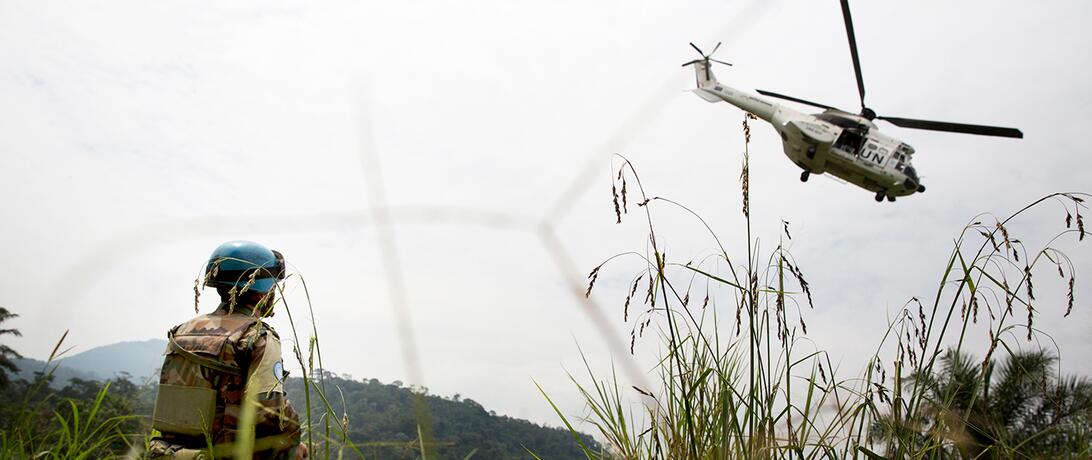
From facilitating troop mobilty and rapid reaction, to surveillance, medical evacuation, and logistical support, helicopters play a crucial role in UN Peacekeeping missions. Despite the increasing dependence on helicopters, the UN does not have the necessary numbers.
This is the third post in a series on peacekeeping effectiveness. Read the first and second on the ThinkPeace blog.
In November 2012, troops from the M23 rebel group marched into the city of Goma in eastern Democratic Republic of Congo. UN troops sat on the sidelines, powerless to turn back the rebel force. It was a clear example of the shortcomings of UN peacekeeping, and it spurred significant changes in the mandates and capabilities deemed necessary for peacekeeping missions. A year later, the UN began to mobilize new, more offensive forces. South African Rooivalk attack helicopters were now flying combat missions against M23 positions. Within weeks the most powerful rebel group in the region had fallen apart and fled the country.
But this is only one of the more dramatic demonstrations of the use of helicopters in UN peacekeeping. The offensive capabilities of attack helicopters comprise one of many vital roles helicopters play in UN missions. They also undertake critical operations such as providing troop mobility and rapid reaction. In addition, they aid in surveillance, medical evacuation, and logistical support. A recent academic paper explained the need for helicopters in peacekeeping:
“Due to the dynamic, demanding and urgent nature of these operations, as well as their often geographically and logistically challenging environments, missions have become increasingly dependent on helicopters to implement their mandates.”
However, the UN does not yet receive the number of helicopters necessary to execute its missions. Many of the states that provide troops for UN missions have few helicopters to contribute. And the helicopters that peacekeepers have access to are often not up to the task. Some states, such as Ethiopia, India, and Ukraine, do contribute their fair share of helicopter assets, but the quality and quantity are not sufficient. According to Atul Khare, Under-Secretary-General, UN Department of Peacekeeping Operations,
“70 percent of our military helicopters today are deployed in absence of night-flying equipment, in absence of air collision avoidance system, in absence of terrain collision avoidance system, in absence of FLIR, the forward looking infrared, so they cannot operate in the night. You know, what is the point of those helicopters? But we have to take them because nothing else is available.”
The militaries with the capacity to provide state-of-the-art helicopters are often hesitant to do so unless their own troops are at risk. They also fear the potential political backlash of helicopter casualties. But more advanced militaries will have to contribute toward this vital capability. Thankfully, there has been some progress. China, Germany, and Canada have already provided or are seriously considering providing helicopters.
For modern militaries that do not provide helicopters, there is room for alternative assistance. They can train pilots of those states that do make helicopter contributions, or provide or pay for maintenance and repairs during their deployment. Helicopter deployment in UN peacekeeping is fraught with logistical and political hurdles. Finding creative ways to bring helicopters into the peacekeeping arsenal is crucial. It’s a fundamental step toward making peacekeeping work.
Check back next week for the next part of our series on peacekeeping. We’ll discuss the transnational nature of the challenges facing UN peacekeeping operations. For previous pieces in this series on making UN peacekeeping more effective and other analyses on international conflict and governance, check our ThinkPeace blog.
Article Details
Published
Topic
Program
Content Type
Opinion & Insights